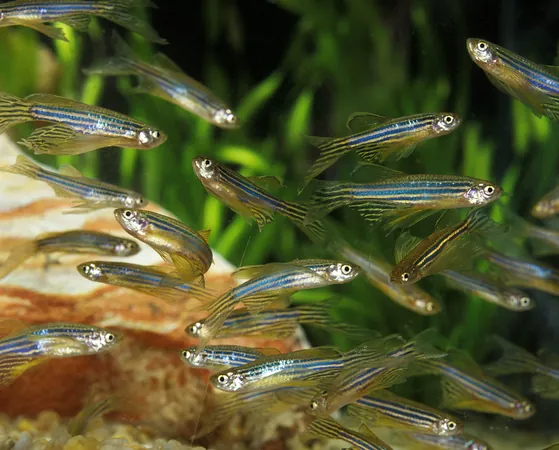
Groundbreaking Discovery: Zebrafish Protein Could Pave the Way for Heart Regeneration in Humans
2025-01-02
Author: Siti
Groundbreaking Discovery in Heart Regeneration
Researchers at the Hubrecht Institute, in collaboration with other esteemed institutions, have made an exciting breakthrough using a protein derived from zebrafish, known as Hmga1, which may revolutionize the field of heart regeneration. This incredible protein has the ability to reactivate heart repair genes in mice, effectively fostering the regeneration of damaged heart cells. Importantly, this process occurs without triggering harmful side effects such as heart enlargement.
Publication Details
The findings are detailed in a recent paper published in *Nature Cardiovascular Research*, titled "Cross-species comparison reveals that Hmga1 reduces H3K27me3 levels to promote cardiomyocyte proliferation and cardiac regeneration." This research raises promising possibilities for the development of regenerative therapies targeting heart conditions in human patients by tapping into the intricacies of the epigenome.
Zebrafish and Heart Regeneration
Zebrafish are uniquely suited for studies on regeneration, as they possess the remarkable ability to grow new heart muscle cells and fully restore heart function within just 60 days. While the exact mechanisms of this regeneration remain imperfectly understood, researchers believe that analyzing the regeneration in zebrafish, alongside comparisons to other species, could unlock vital insights into preventing heart failure in humans.
Comparative Analysis with Mice and Humans
Unlike zebrafish, mouse hearts, much like human hearts, lack the capacity to regenerate. In the study, the researchers evaluated gene activity in both damaged and healthy regions of the heart in mice and zebrafish. Hmga1, a gene predominantly active during embryonic development, becomes inactive in mature cells. However, its presence plays a crucial role during zebrafish heart regeneration, signifying its potential importance in human cardiac repair.
Mechanism of Action
The research demonstrates that Hmga1 can reactivate developmentally silenced genes through modulating levels of H3K27me3, effectively removing "molecular roadblocks" on chromatin. This revitalizing action allows dormant genes to resume their regenerative functions, paving the way for heart cell rejuvenation.
Efficacy Confirmed in Mammals
To confirm the protein's efficacy in mammals, the scientists localized Hmga1 to damaged mouse hearts and observed that it successfully prompted damaged heart muscle cells to divide and regenerate. Notably, this regenerative effect was confined to injured areas, sparing healthy tissue, indicating a unique signaling mechanism activated by damage.
Investigation Across Species
The researchers also investigated Hmga1 gene activity across three species—zebrafish, mice, and humans. They found a striking similarity: in both adult human and mouse hearts, protein production does not occur following damage. However, since Hmga1 is active during embryonic development, there is hope that advancements in gene therapy could enable us to reactivate this protein in adult hearts after injury.
Next Steps and Future Prospects
Dr. Jeroen Bakkers, the study lead, notes that further refinement and testing of this therapy are essential before it can enter clinical trials. The next phase involves experimenting with human heart muscle cells in culture to definitively assess efficacy.
Conclusion
Stay tuned as researchers delve deeper into this ground-breaking discovery; the possibility of turning back the clock on heart damage could be just around the corner!
 Brasil (PT)
Brasil (PT)
 Canada (EN)
Canada (EN)
 Chile (ES)
Chile (ES)
 Česko (CS)
Česko (CS)
 대한민국 (KO)
대한민국 (KO)
 España (ES)
España (ES)
 France (FR)
France (FR)
 Hong Kong (EN)
Hong Kong (EN)
 Italia (IT)
Italia (IT)
 日本 (JA)
日本 (JA)
 Magyarország (HU)
Magyarország (HU)
 Norge (NO)
Norge (NO)
 Polska (PL)
Polska (PL)
 Schweiz (DE)
Schweiz (DE)
 Singapore (EN)
Singapore (EN)
 Sverige (SV)
Sverige (SV)
 Suomi (FI)
Suomi (FI)
 Türkiye (TR)
Türkiye (TR)
 الإمارات العربية المتحدة (AR)
الإمارات العربية المتحدة (AR)